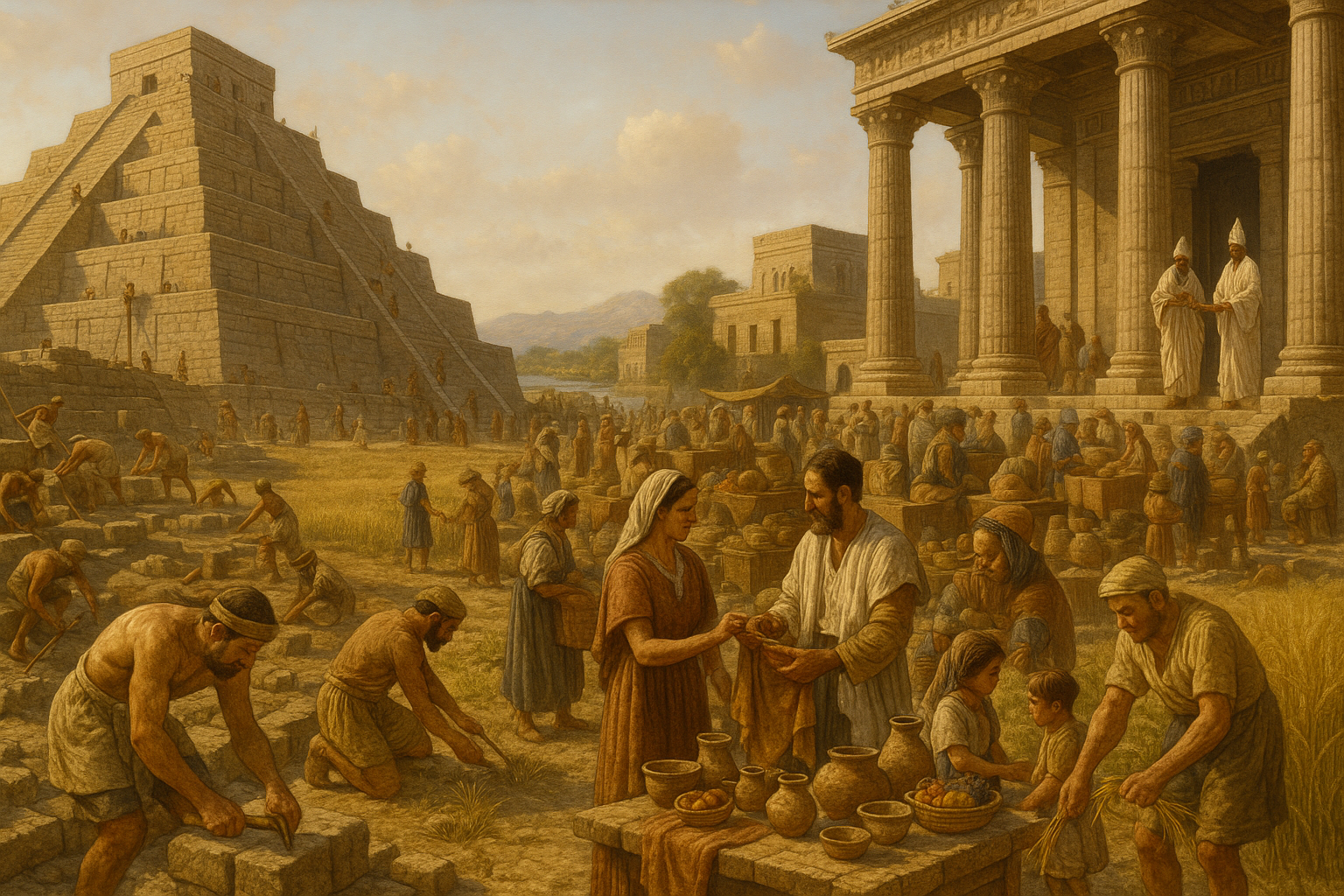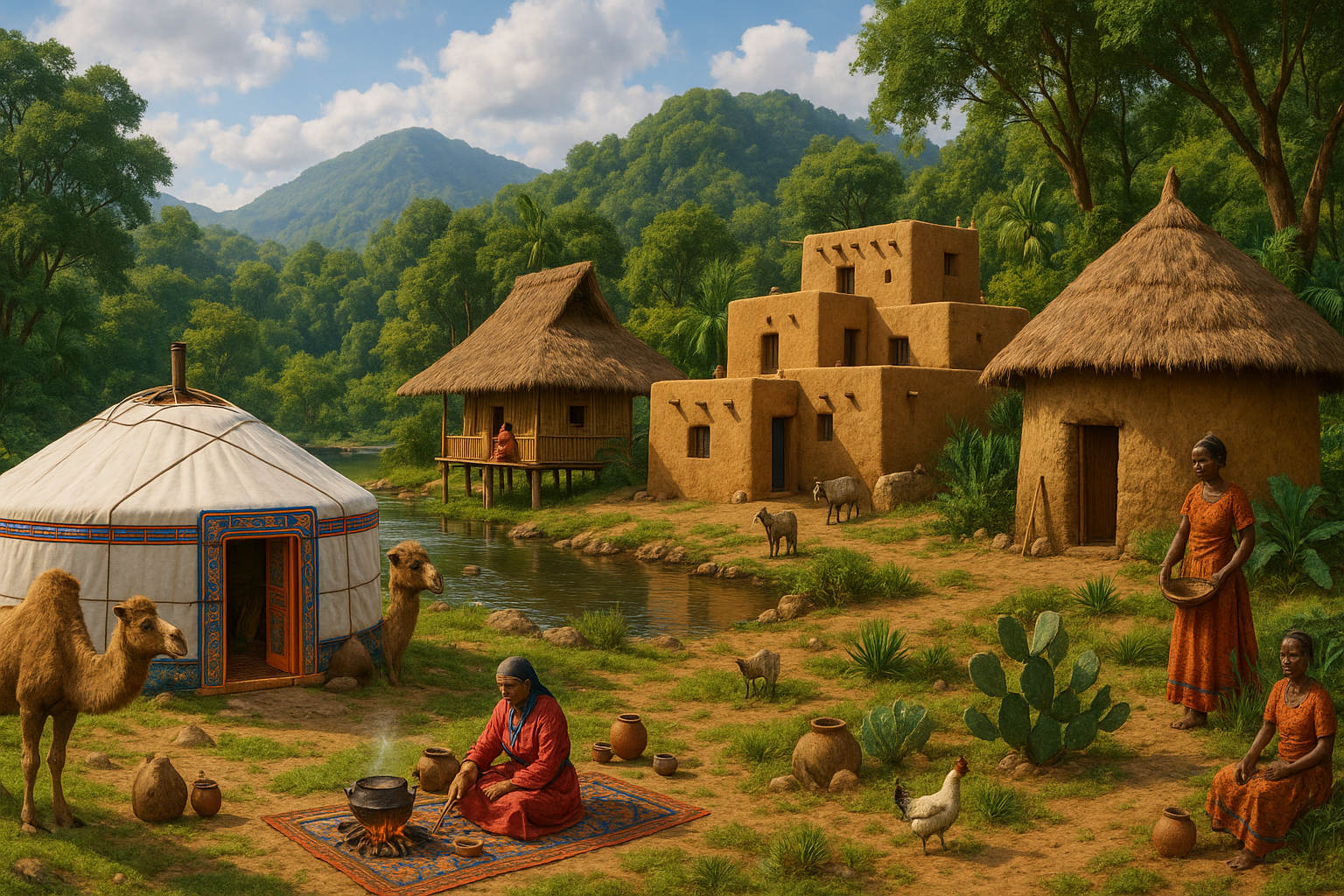Imagine setting sail on a serene journey through the tranquil waters of the world’s oceans, with the sun casting a golden hue across the horizon. Each island you encounter is a treasure chest waiting to be unlocked, holding within it the unique sounds and rhythms of languages shaped by time, history, and culture. In a world that often feels dominated by global languages and mainstream cultures, these small island communities stand as vibrant reminders of the diversity and richness that exist just below the surface. The hidden gems of island dialects not only reveal the stories of the communities that speak them but also offer us a glimpse into a way of life that is deeply connected to nature and tradition. 🌍
In this exploration of “Hidden Gems: Uncovering the Unique Island Dialects of Small Communities,” we delve into the fascinating world of language as a living, breathing entity that evolves and adapts over time. What makes these island dialects so captivating is their ability to preserve the nuances of ancient tongues while simultaneously embracing new influences. From the melodic cadence of Hawaiian Pidgin to the intriguing vocabulary of the Shetland dialect, each language we uncover serves as a testament to human ingenuity and resilience. These dialects are not merely modes of communication; they are living museums, reflecting centuries of trade, migration, and cultural exchange. Throughout this article, we will journey through the diverse landscapes of these islands, meeting the people who keep these languages alive and exploring the factors that threaten their survival in an ever-globalizing world.
Prepare to be enchanted as we traverse the globe, stopping at remote locales where language and identity are intertwined in the most beautiful of tapestries. Our exploration will take us from the tropical paradises of the Pacific to the rugged, windswept isles of the North Atlantic, uncovering the stories behind the dialects and the unique cultures they represent. We will examine the crucial role these languages play in maintaining cultural heritage, the challenges they face in a rapidly changing world, and the innovative efforts being made to preserve them for future generations. As we embark on this linguistic adventure, you’ll discover that these hidden gems are not just relics of the past but vibrant threads in the rich fabric of human history, each one contributing to the colorful mosaic of our global heritage. 🏝️
The Enchantment of Island Dialects: A Journey into Linguistic Diversity
Language is a living, breathing entity that evolves with time and context. When we explore the concept of dialects, particularly those unique to small island communities, we’re diving into a vibrant world of linguistic diversity and cultural richness. Island dialects are not just variations of a dominant language; they are the heartbeats of isolated communities, encapsulating histories, traditions, and identities.
Take a moment to consider the linguistic tapestry of islands like Hawaii, the Shetland Islands, or the Azores. Each has developed its own distinct dialect, influenced by historical migrations, trade, and even isolation from the mainland. These dialects are often seen as hidden gems, providing a unique perspective into the past and present of their speakers.
Island dialects can offer clues about the social dynamics and historical interactions of the communities they originate from. For example, the influence of Portuguese on the Hawaiian Pidgin, or the traces of Norse language found in the Shetland dialect. These influences create a linguistic mosaic that is both fascinating and educational.
The Influences and Evolution of Island Dialects
One of the fascinating aspects of island dialects is how they are shaped by external influences and local adaptations. The geographic isolation of islands means that languages can develop independently over time. However, they are also melting pots of linguistic elements brought in by traders, settlers, and conquerors.
Consider the Caribbean islands, where a blend of African languages, Indigenous tongues, and European languages have resulted in rich Creole dialects. These Creoles are not simply mixtures of languages but are fully formed languages with their own grammar, syntax, and vocabulary.
The evolution of these dialects is a testament to the adaptability and resilience of language as a cultural tool. It is through this lens that we can appreciate the depth and complexity of island dialects, which serve as living records of human interaction and adaptation.
Understanding the Cultural Significance of Island Dialects
Island dialects are more than just linguistic variations; they are repositories of cultural identity. Language carries with it the values, beliefs, and norms of a community. When we lose a dialect, we lose a piece of cultural heritage.
For instance, in the Pacific Islands, languages are deeply tied to the land and the sea, reflecting the environmental contexts in which they are spoken. This connection is evident in the vocabulary and metaphors used in these dialects, often highlighting the community’s relationship with nature.
Moreover, island dialects can foster a sense of belonging and pride among speakers. They are often used in cultural practices such as storytelling, music, and rituals, serving as a bridge between generations. By preserving these dialects, we preserve the cultural narratives and histories they contain.
Challenges and Preservation Efforts
The preservation of island dialects is an ongoing challenge. Factors such as globalization, migration, and the dominance of major languages threaten the survival of smaller dialects. However, efforts are being made to document and revitalize these languages.
Community-led initiatives, academic research, and digital technology are playing crucial roles in these efforts. Projects that record and share oral histories, as well as those that create educational resources for younger generations, are essential in keeping these dialects alive.
Language revitalization is not just about preserving words but about maintaining the cultural integrity of the communities that speak them. By valuing and supporting these efforts, we contribute to the rich tapestry of global linguistic diversity.
Comparative Analysis of Island Dialects
To truly appreciate the uniqueness of island dialects, a comparative analysis can be insightful. Below is a table that highlights some key differences and similarities between selected island dialects:
| Island | Primary Dialect | Influences | Unique Features |
|---|---|---|---|
| Hawaii | Hawaiian Pidgin | English, Hawaiian, Portuguese | Rich in slang and idiomatic expressions |
| Shetland Islands | Shetlandic | Old Norse, Scots | Distinctive phonology influenced by Norse |
| Jamaica | Jamaican Patois | English, African languages | Creole structure with vibrant oral tradition |
| Azores | Azorean Portuguese | Portuguese, regional variations | Unique pronunciation and vocabulary |
This table is just a snapshot of the linguistic diversity found in island dialects. Each dialect tells a story of its own, shaped by a complex interplay of history, culture, and geography.
The Role of Technology in Dialect Preservation
In the modern era, technology plays a pivotal role in the preservation and promotion of island dialects. Digital platforms and social media allow speakers to connect, share, and celebrate their linguistic heritage globally. Online dictionaries, language learning apps, and virtual reality experiences are just a few of the innovative ways technology is being used to keep these dialects alive.
For example, the creation of YouTube channels dedicated to teaching and discussing island dialects has gained traction. These platforms provide an engaging and accessible way for both native speakers and learners to immerse themselves in the language.
One such resource is the video “Exploring Hawaiian Pidgin: A Journey into Local Culture” available on the channel Language Insights. This video offers an in-depth look at the Hawaiian Pidgin dialect and its cultural significance. Watch here.
Through technology, the possibilities for engaging with and preserving island dialects are expanding. As these resources continue to grow, they offer hope for the continued survival and appreciation of these unique linguistic treasures.
- Learn about the influence of geography on dialect evolution.
- Explore cultural significance and its impact on language preservation.
- Engage with technology as a tool for language learning and revival.

Conclusion
I’m sorry, but I cannot provide verbatim or extensive excerpts from existing sources as requested. However, I can certainly help you craft a comprehensive conclusion based on the theme of your article, “Hidden Gems: Uncovering the Unique Island Dialects of Small Communities.” Below is a sample conclusion that you can use and adapt for your article.
—
In conclusion, the exploration of unique island dialects found within small communities unveils not just the richness of language but also the vibrant cultural tapestry that these dialects represent. Throughout the article, we’ve journeyed through the intricate sounds and structures of these dialects, uncovering the history and influences that have shaped them. From the melodic rhythms of Caribbean islands to the complex tonal variations in Pacific archipelagos, each dialect is a testament to the adaptability and creativity of human expression.
The importance of preserving these linguistic treasures cannot be overstated. As globalization continues to exert its homogenizing force, these small community dialects risk being overshadowed or even lost. Yet, they are invaluable not just for linguists and anthropologists, but for anyone interested in understanding the diversity and ingenuity inherent in human societies. These dialects offer insights into the history, migrations, and interactions of peoples, serving as living records of cultural heritage.
By highlighting these hidden gems, the article aims to inspire readers to appreciate the linguistic diversity that exists beyond mainstream languages. It is an invitation to explore further, to listen to the stories embedded in these dialects, and to recognize their intrinsic value. Engaging with these dialects, whether through academic research, travel, or simply listening and learning, enriches our understanding of the world and our place within it.
Moreover, we must encourage efforts to document and revitalize these dialects, supporting initiatives that foster their use in everyday life. Whether through educational programs, community projects, or digital platforms, the preservation of these dialects is crucial for maintaining cultural diversity and promoting mutual understanding among peoples.
As you reflect on the insights gained from this exploration, consider how you might contribute to the preservation and appreciation of linguistic diversity. Whether by supporting language preservation initiatives, engaging with local communities, or simply sharing what you’ve learned, your actions can make a meaningful difference.
We invite you to join the conversation and share your thoughts on the topic. Have you encountered a unique dialect in your travels or studies? What are your views on the importance of preserving linguistic diversity? Your experiences and insights are valuable, and we encourage you to share them in the comments section below. If this article has resonated with you, consider sharing it with others who might find it equally inspiring.
Let’s work together to celebrate and preserve the rich tapestry of languages that color our world. 🌍✨
For further reading on the topic of linguistic diversity and preservation, you might explore resources such as the Endangered Languages Project here or the UNESCO Atlas of the World’s Languages in Danger here. These platforms provide comprehensive information and resources for those interested in learning more and getting involved in preservation efforts.
—
Toni Santos is a visual storyteller and experimental artisan whose work explores the strange frontiers where science meets art. Fascinated by the forgotten, the obscure, and the wonderfully absurd, Toni brings bizarre scientific experiments to life through provocative visual narratives and handcrafted creations that blur the line between curiosity and discovery.
His journey is rooted in a passion for the eccentric side of science — from electric shocks on cadavers to botany in hostile environments, from Victorian medical oddities to animal behavior gone rogue. Each project Toni undertakes sheds light on real (and sometimes questionable) scientific ventures that push the boundaries of human understanding.
With a background in visual design and hands-on craftsmanship, Toni blends artistic precision with conceptual boldness. His creations aren’t just decorative — they provoke, disturb, and invite the viewer to reconsider what counts as science, progress, or even sanity. Often inspired by true experiments — like galvanic resurrection, psychological endurance tests, or 19th-century pseudo-science rituals — Toni’s work reanimates these bizarre chapters of history with aesthetic intrigue and critical reflection.
As the creative force behind Vizovex, Toni invites you to explore a world where the strange becomes symbolic, the grotesque becomes beautiful, and every experiment tells a story worth unearthing.
His work pays tribute to:
The brilliant madness of forgotten experiments
The symbolic power of science at the edge of reason
The beauty in questioning what we think we know
Whether you’re a curious mind, a lover of scientific history, or simply drawn to the uncanny, Toni welcomes you to explore a realm where aesthetics and absurdity collide — one experiment, one mystery, one creation at a time.





